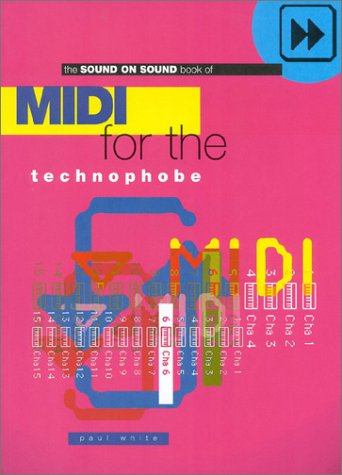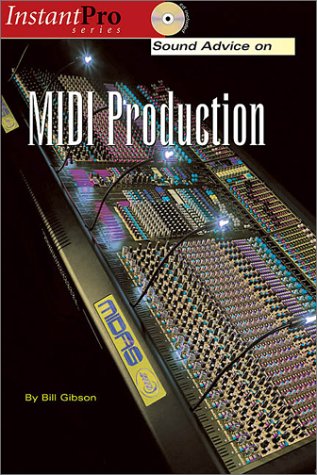
Sound Advice on MIDI Production
Bill A. Gibson
Paperback - 80 pages & CD (January 2011)
Learn how to use this communication protocol to enhance your recordings in the third millennium. Whether
you're creating a MIDI sequencing extravaganza, supporting an acoustic recording, or synchronizing equipment,
MIDI (which has come a long way since its implementation in the '80s) is likely to be involved. See and hear
practical applications of MIDI gear such as keyboards, sound modules, effect processors, recorders, mixers,
triggers, and controllers. This book will help you produce more powerful and impressive recordings through a
deeper understanding of MIDI. The included CD provides audio examples.
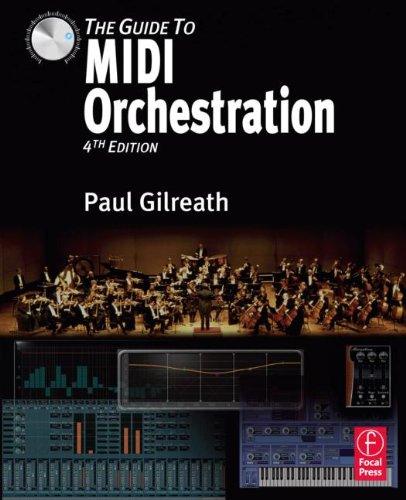
The Guide to MIDI Orchestration
Paul Golreath
Paperback 4th edition - 608 pages (April 2010)
Since its initial release in 1997, Paul Gilreath's The Guide to MIDI Orchestration has been
the premiere text on creating realistic emulations of a symphony orchestra using samplers and computer
recording techniques. Now in its fourth edition, The Guide to MIDI Orchestration explains how
to merge this ever-expanding technology with the artistry of orchestration to produce the most lifelike
recordings possible. The book is written for composers, arrangers, and MIDI musicians of all levels,
and will be helpful to game composers, film and television composers, traditional orchestral composers,
teachers, instructors, and the serious hobbyist. Highlights of the book include:
• Introduction to and overview of the orchestra
• In-depth discussions of each orchestral section
• Detailed information on each instrument's timbre, range and uses
• Discussions of orchestration techniques
• Demonstrations on how to build an orchestration from the ground up
• Presentations on techniques for achieving balance and musical interest
• Setup and recommendations for software and equipment
• Details on setting up a multi-computer network for use as slave computers
• Overview of software sampler and Digital Audio Workstation software
• Presentation of note entry methods
• DAW and sampler template implementation
• Detailed steps for achieving realistic reverberation and instrument placement
• Start to finish steps to achieve a final mix
• Insightful interviews with top mastering engineers.
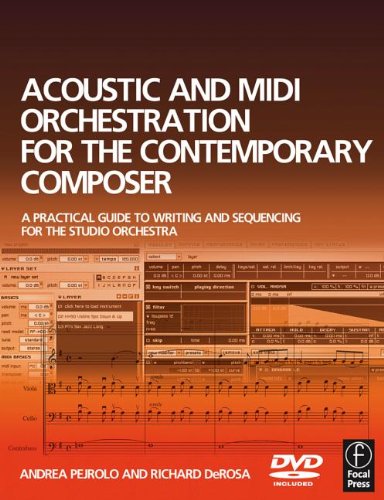
Acoustic and MIDI Orchestration for the Contemporary Composer
Andrea Pejrolo, Richard DeRosa
Paperback - 312 pages & CD (November 2007)
Get complete guidance on both traditional orchestration and modern production techniques with
this unique book. With effective explanations and clear illustrations, you will learn how to
integrate the traditional approach to orchestration with the modern sequencing techniques and
tools available. You will discover how to bridge the two approaches in order to enhance your
final production.
The accompanying CD includes a comprehensive and wide selection of examples, templates and sounds
to allow you to hear the techniques within the book.
By covering both approaches, this book provides a comprehensive and solid learning experience that
will develop your skills and prove extremely competitive in the music production business.
• Complete orchestration manual covering both traditional and modern techniques
• Versatile, non-software specific, perfect choice for professionals and colleges
• Accompanying DVD with examples, templates and sounds brings techniques to life
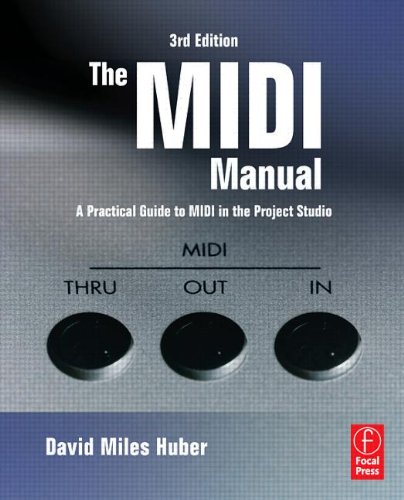
The MIDI Manual: A Practical Guide to MIDI in the Project Studio
David Miles Huber
Paperback 3rd edition - 384 pages (March 2007)
The MIDI Manual is a complete reference on MIDI, written by a well-respected sound engineer and author.
This best-selling guide provides a clear explanation of what MIDI is, how to use electronic instruments
and an explanation of sequencers and how to use them. You will learn how to set up an efficient MIDI
system and how to get the best out of your music.
The MIDI Manual is packed full of useful tips and practical examples on sequencing and mixing techniques.
It also covers editors/librarians, working with a score, MIDI in mass media and multimedia and synchronisation.
The MIDI spec is set out in detail along with the helpful guidelines on using the implementation chart.
Illustrated throughout with helpful photos and screengrabs, this is the most readable and clear book on MIDI
available.
• Complete illustrated guide to the MIDI spec and explanation of the implementation chart
• Practical advice on sampling and sequencing, covering all the major DAWs
• Includes all the latest developments in hardware and software.
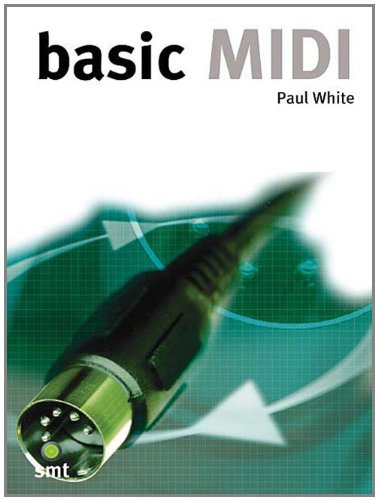
Basic MIDI
Paul White
Paperback 2nd edition - 200 pages (January 2006)
Understanding MIDI — the Musical Instrument Digital Interface — is essential to the best use of
modern musical equipment. Paul White covers the basics of MIDI and MIDI equipment.
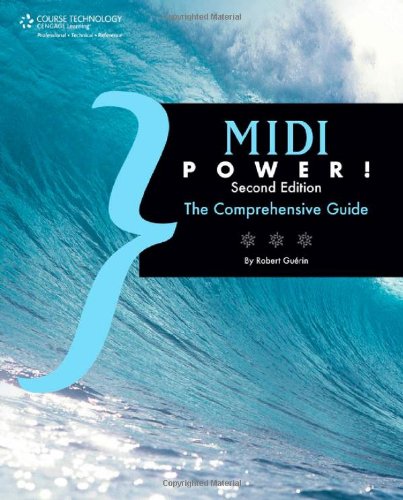
MIDI Power!: The Comprehensive Guide
Robert Guerin
Paperback 2nd edition - 416 pages (September 2005)
From how MIDI works, to how to connect devices through it, to how it integrates into a computer environment,
MIDI Power!, Second Edition is a comprehensive reference guide to MIDI. The book provides an in-depth
look at MIDI, its messages, and protocols, and the information necessary to navigate it with ease. Readers
learn when to use MIDI, how to edit MIDI, what technology uses MIDI, what software uses MIDI, and how MIDI
is integrated into computers and what that implies for musicians, sound designers, and audio enthusiasts.
MIDI Power!, Second Edition provides complete coverage of MIDI hardware and software, is suitable for
both Mac and Windows platforms.
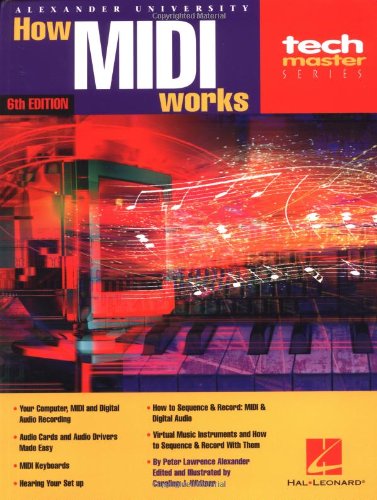
How MIDI Works
Rob Young
Paperback 6th edition - 402 pages (July 2001)
The revised 6th edition of this easy-to-use book is written in simple English and assumes no prior background
with MIDI. Starting with the computer, How MIDI Works takes readers all the way through MIDI, sequencing
and digital audio recording, and features chapter summary questions to ensure understanding. Topics covered
include: the computer language of MIDI, controllers for keyboard operations, the mixing board within, hard disk
audio recording, and many more. This text is a mainstay at colleges and universities across the nation.
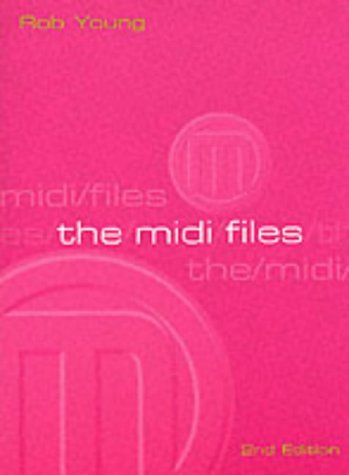
The MIDI Files
Rob Young
Paperback 2nd edition - 320 pages & CD-ROM (April 2001)
In this new edition of The Midi Files, experienced programmer and musician Rob Young explains clearly and
simply how you can get the best from MIDI. Going far beyond the contents of equipment manuals and user guides,
The Midi Files 2ed is a comprehensive guide to everything you ever wanted to know about Midi. CD-ROM
contains over 60 examples of MIDI files by the author, plus professional MIDI software for Windows from companies
including Steinberg and Yamaha.
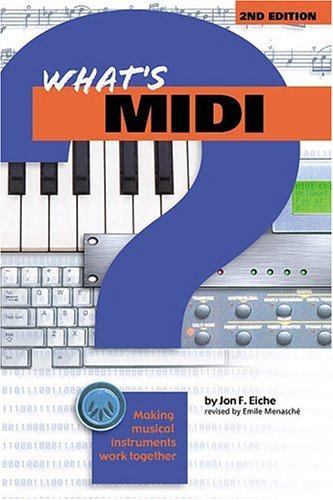
What's MIDI?
Jon F. Eiche, Emile Menasche
Paperback 2nd edition - 64 pages (February 2001)
Questions about MIDI? This book has all the answers! Understanding the language that allows musical instruments
to interface digitally is crucial for today's players, and this handy guide is the perfect place to start.
What's MIDI? lays out all the essentials without bogging down newcomers in techno-talk. Possibly the only
book on the subject you'll ever need!
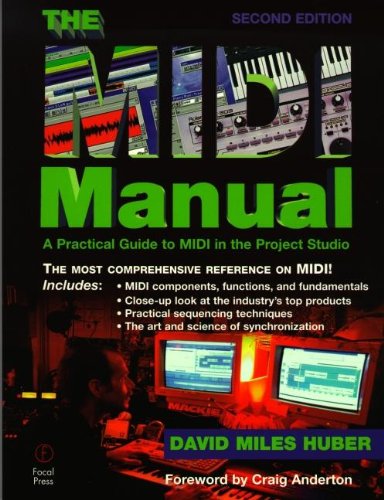
The MIDI Manual
David Miles Huber
Paperback 2nd edition - 255 pages (January 1999)
Written as an all-around guide to the intensely popular Musical Instrument Digital Interface technology,
The MIDI Manual, Second Edition provides a close-up look at the industry's top products and teaches
you how to integrate them with your computer. Illustrations and step-by-step lessons teach you how to set
up an efficient MIDI system as well as how to use your PC to expand your musical recording and performance
techniques.
Inside this book you'll learn:
• MIDI components, functions and fundamentals
• MIDI's full range of production techniques
• The science of synchronization to combine MIDI and sync pulse timing
• The art of sequencing.
This manual has been revised and updated to include the new developments in hardware and software. Tips and
practical examples on sequencing and mixing techniques have been added to enhance its usefulness as a reference
tool for sound engineers, musicians and students.
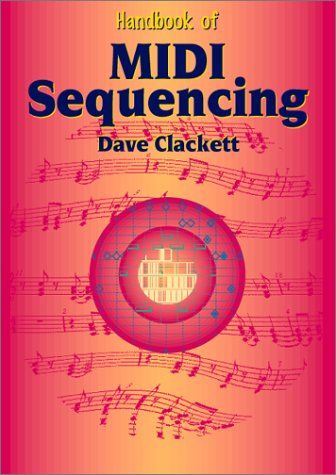
Handbook of MIDI Sequencing
Dave Clackett
Paperback - 244 pages (September 1996)
Written by leading MIDI song file producer Dave Clackett of Hands On MIDI Software, the book lists the hardware
and software you need to set up a sequencing system, and introduces the basics of sequencing and music notation.
It explains how to program drums, keyboard, guitar and bass, as well as 'real' instruments — woodwind, brass,
strings etc., and shows how effects, controllers, SysEx and quantising can be used to fine tune your song files.
There are sections on synchronising to tape, standard MIDI files, copyright, transcribing from record, and a chapter
on using MIDI files live.
The book will be of particular interest to musicians using General MIDI/GS/XG equipment, but all the examples are
relevant whether you use a hardware based sequencer or an Atari, PC, Mac or Amiga.
With a help section, a glossary and appendices on General MIDI data, it's a book no MIDI musician can afford to be
without.
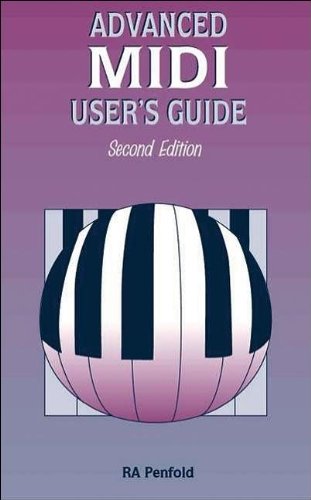
Advanced MIDI Users Guide
R.A. Penfold
Paperback 2nd edition - 185 pages (March 1996)
This book is a guide for the musician, performer, producer, composer, recording engineer, computer
enthusiast, student, or anyone wanting to acquire a good understanding of how to work with MIDI. It covers:
the nuts and bolts of MIDI technology; putting together a MIDI system for any occasion; how to synchronize
sequencers, drum machines, and other MIDI instruments; how to purchase MIDI instruments and software; MIDI codes
are explained. Filled with diagrams, photographs, and charts to show you how to create your own MIDI system
from a basic set-up to the outrageous.
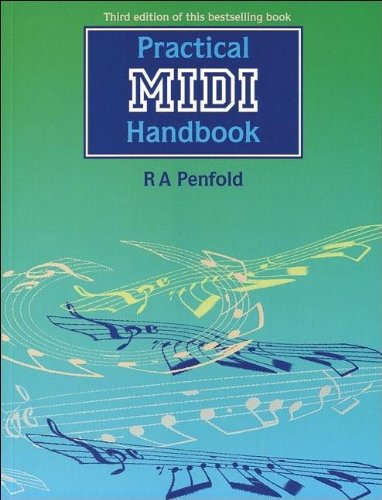
Practical MIDI Handbook
R.A. Penfold
Paperback 3rd edition - 176 pages (January 1996)
If you want a basic down to earth introduction to MIDI and its capabilities, this is the book for you. It
explains the basics of MIDI and what it can do for you, shows how computers can be used in a MIDI set-up
and describes the use of sequencers in music making.
There's a section on MIDI instruments — keyboards, drum machines, guitars, wind instruments etc. —
and MIDI devices like mergers, pedals, effects units, switches and sync units. There's some practical advice
on connecting up a MIDI system, and the book is nicely rounded off with a glossary of terms.
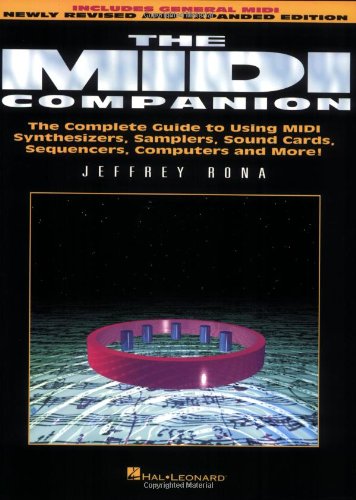
The MIDI Companion: The Ins, Outs and Throughs
Jeff Rona
Paperback - 96 pages (February 1994)
A guide to using MIDI synthesizers, samplers, soundcards, sequencers and computers. It shows how MIDI systems
for a range of situations can be assembled trouble free. It also describes how to synchronize MIDI sequencers,
drum machines, multitrack equipment, SMPTE based equipment and other MIDI intsruments. The work also describes
MIDI codes and the techniques used in transmitting these codes between MIDI devices. It explains how to get the
most out of any situation that calls for the use of synthesizers and electronic instruments.
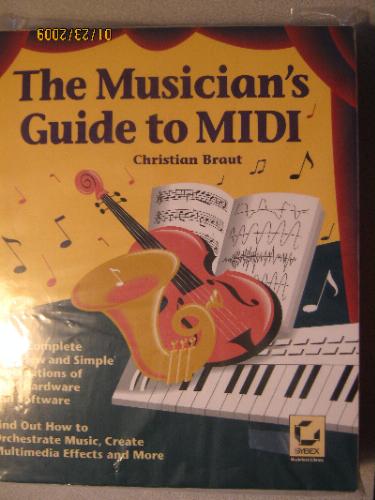
The Musician's Guide to MIDI
Christian Braut
Paperback - 900 pages (January 1994)
Since its appearance in 1983, MIDI has become the universal communications standard for musical information.
However, the MIDI language isn't easy to master. This book's comprehensive tutorial approach removes the mystery
with an in-depth examination that takes the user from basic concepts to sophisticated techniques. Covers every
major feature of the MIDI standard and targets the most likely users of MIDI products--instrumentalists who create
music electronically. Includes products overviews.
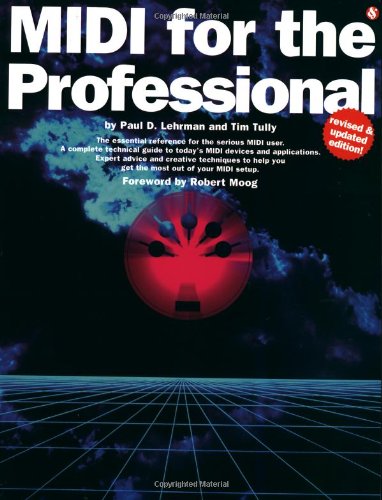
MIDI for the Professional
Paul D. Lehrman, Tim Tully
Paperback 2nd edition - 255 pages (July 1993)
MIDI For The Professional, now in its second edition, is the standard textbook for college-level courses in MIDI
in the US and abroad. It has received rave reviews Keyboard, the Electronic Music Foundation, the IMA Newsletter,
Piano & Keyboard magazine, and many other publications. For the serious MIDI user--performer, composer,
programmer, multimedia author, equipment designer — there is no better source of information. Paul Lehrman
is one of the best-known authors and teachers in the electronic music and pro audio fields (and is editor of Mix
magazine's Web site) and Tim Tully, former editor of Electronic Musician magazine and technical editor of
New Media, writes for EQ, Videography, and Pro Sound News, and plays a mean tenor. And there's a foreword by
Bob Moog!
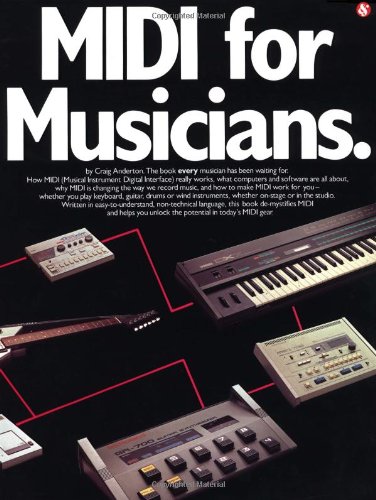
MIDI For Musicians
Craig Anderton
Paperback - 105 pages (December 1986)
The first guide that clearly explains the impact that Musical Instrument Digital Interface (MIDI) has made on the
creation of music. Profusely illustrated with easy-to-understand diagrams and examples that take the mystery out
of MIDI.
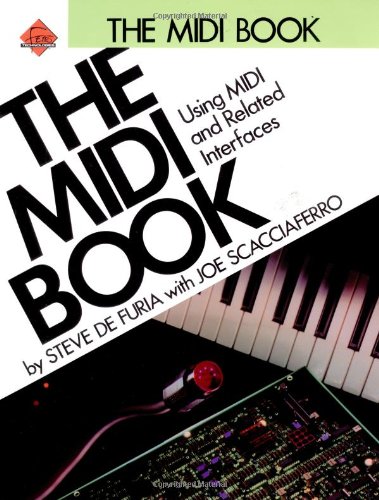
The MIDI Book
Steve De Furia, Joe Scacciaferro
Paperback - 104 pages (July 1986)
This book starts out with a brief explanation of why and how MIDI works. It includes information on how to link
keyboards, sequencers, drum machines and computers into powerful MIDI systems. Discusses every message in the MIDI
language in a musical as well as technical point of view. Includes more than 100 detailed illustrations and diagrams
showing the finer points of how to use MIDI equipment to its fullest.










